Preparations for the launch of the first Chinese cargo ship to the finish line
A little more than a month remains before the launch of the first Chinese cargo ship, Tianzhou-1 (Heavenly Boat), will have to go on flight on April 23, and the rocket with the ship has already been delivered to the Wenchang space center. The Tyangun-2 orbital station is now flying in an unmanned mode, but this should in no way prevent the Chinese from working off their space stations.
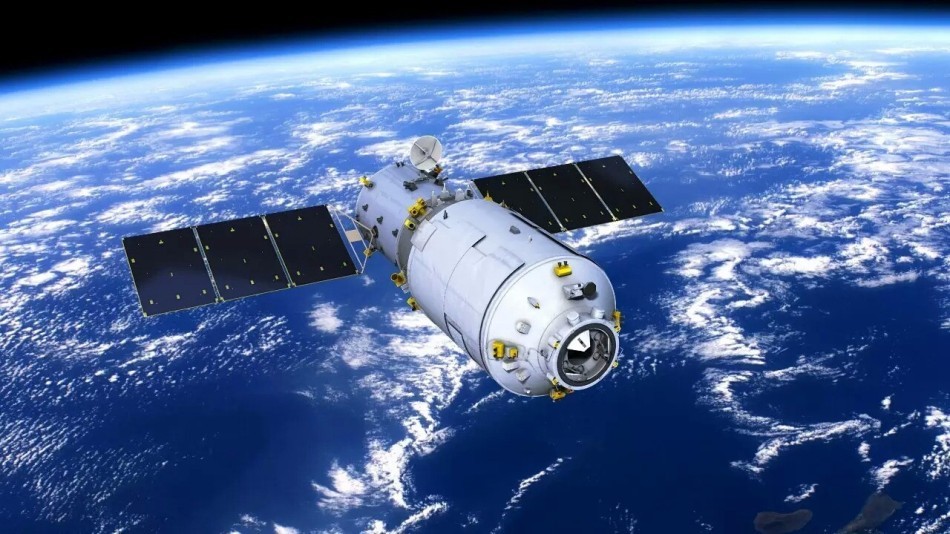
Tianzhou cargo ship in flight
February 13 at the Wenchang space center (Hainan Island) brought the assembled cargo ship "Tianzhou-1." The truck was delivered by sea from the port of Tianjin (near Beijing).

Track ship carrying the ship, source: Chinaspaceflight.com
')

Ship unloading, source: Chinaspaceflight.com
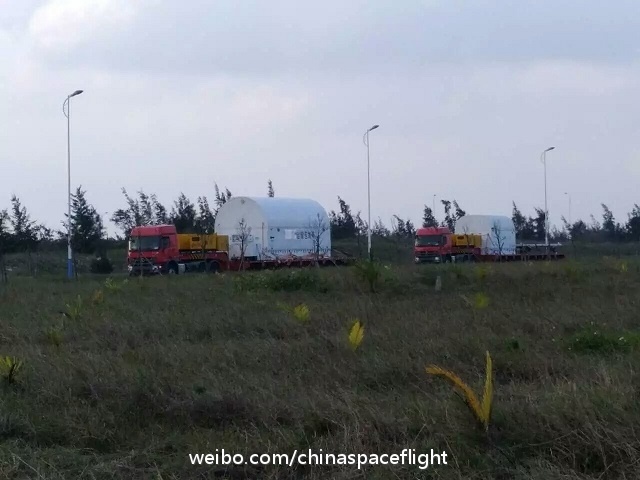
The diameter of 3.35 meters allows you to transport the ship without any problems, source: Chinaspaceflight.com

Tianzhou-1 in the assembly and testing complex, source: Chinaspaceflight.com
Chinese report, many shots of the ship from different angles.
As a launch vehicle will be used the newly created launch vehicle "Great campaign-7". This will be the second launch of the new rocket, launched for the first time in 2016. A cargo ship weighing 13.5 tons will be heavier than the orbital station, with which it will dock, because the eight-ton Tyangun-2 station was limited to the payload of its older launch vehicle The Great March-2F.
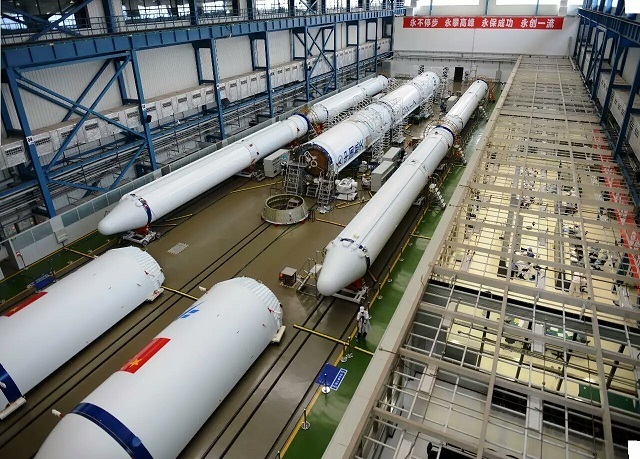
"Great campaign-7" in the shop before being sent to the spaceport. The four side blocks (the first step), the second and third steps in the center, and the head fairing in the foreground, source: Chinaspaceflight.com are perfectly visible.
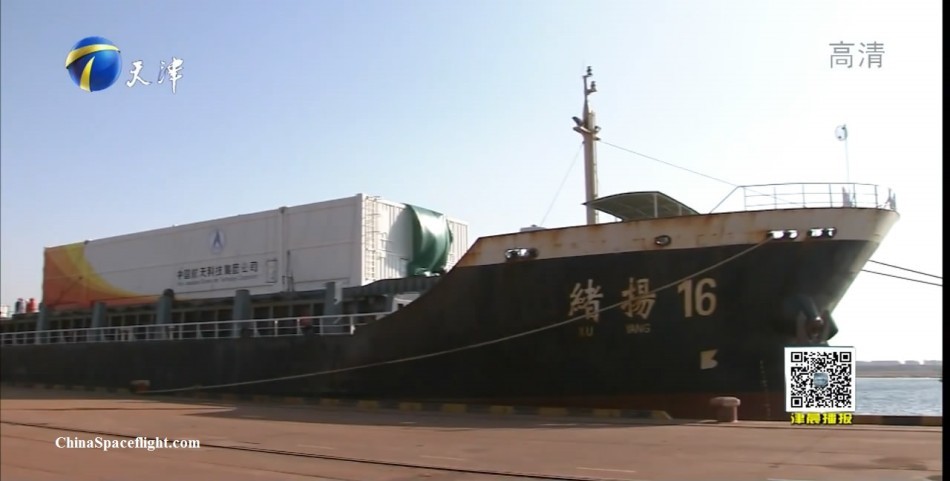
Containers with steps on a transport vessel, source: Chinaspaceflight.com
It has long been known that the cargo ship will have to work out refueling of an orbital station that is in orbit without a crew. But now the mission plan was clarified. The Tianzhou-1 truck will have to dock with the orbital station three times, with each time checking the possibility of refueling. In one of the attempts, rapid convergence technologies similar to those used by Russia for rendezvous and docking in six hours will be tested.
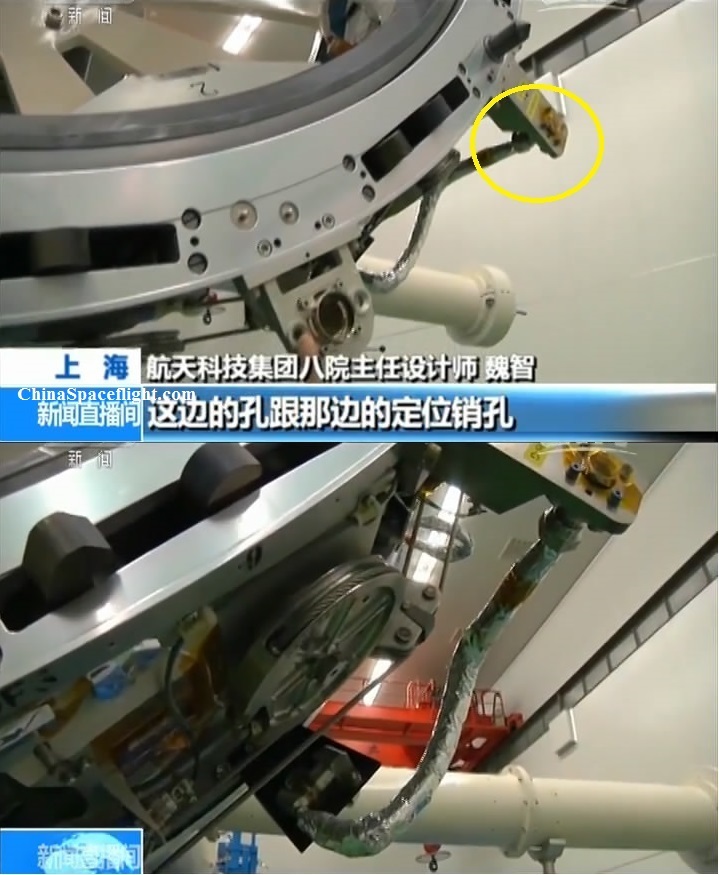
Connector pumping fuel on a cargo ship, source: Chinaspaceflight.com
In addition to docking planned tests of the resource of the cargo ship. “Tianzhou-1” will have to spend two months in the state docked with the station and three months in autonomous flight. As with most cargo ships, there is no descent vehicle on Tianzhou, and after the mission is completed, it will have to burn in the atmosphere.
Manual cargo transfer is not a high-tech operation, and there is no need to work it out in space. At the same time, if there was a crew on the "Tyangun-2", it would be possible to train in the extension of the manned mission on the supply from the trucks. For some reason, the Chinese space agency did not follow this path, and the Tyangun-2 orbital station is expected to be uneconomically abandoned after just one manned and one unmanned mission. However, the Chinese manned cosmonautics will soon reach a new level - in 2018 the Tianhe base unit of the modular orbital station will go to orbit, similar in function to the Mir station base unit launched in 1986. The twenty-ton module will have to put into orbit a new heavy launch vehicle "The Great March-5", which first launched in the fall of 2016.

Tianzhou cargo ship in flight
Training
February 13 at the Wenchang space center (Hainan Island) brought the assembled cargo ship "Tianzhou-1." The truck was delivered by sea from the port of Tianjin (near Beijing).

Track ship carrying the ship, source: Chinaspaceflight.com
')

Ship unloading, source: Chinaspaceflight.com

The diameter of 3.35 meters allows you to transport the ship without any problems, source: Chinaspaceflight.com

Tianzhou-1 in the assembly and testing complex, source: Chinaspaceflight.com
Chinese report, many shots of the ship from different angles.
As a launch vehicle will be used the newly created launch vehicle "Great campaign-7". This will be the second launch of the new rocket, launched for the first time in 2016. A cargo ship weighing 13.5 tons will be heavier than the orbital station, with which it will dock, because the eight-ton Tyangun-2 station was limited to the payload of its older launch vehicle The Great March-2F.

"Great campaign-7" in the shop before being sent to the spaceport. The four side blocks (the first step), the second and third steps in the center, and the head fairing in the foreground, source: Chinaspaceflight.com are perfectly visible.

Containers with steps on a transport vessel, source: Chinaspaceflight.com
Flight plan
It has long been known that the cargo ship will have to work out refueling of an orbital station that is in orbit without a crew. But now the mission plan was clarified. The Tianzhou-1 truck will have to dock with the orbital station three times, with each time checking the possibility of refueling. In one of the attempts, rapid convergence technologies similar to those used by Russia for rendezvous and docking in six hours will be tested.

Connector pumping fuel on a cargo ship, source: Chinaspaceflight.com
In addition to docking planned tests of the resource of the cargo ship. “Tianzhou-1” will have to spend two months in the state docked with the station and three months in autonomous flight. As with most cargo ships, there is no descent vehicle on Tianzhou, and after the mission is completed, it will have to burn in the atmosphere.
Manual cargo transfer is not a high-tech operation, and there is no need to work it out in space. At the same time, if there was a crew on the "Tyangun-2", it would be possible to train in the extension of the manned mission on the supply from the trucks. For some reason, the Chinese space agency did not follow this path, and the Tyangun-2 orbital station is expected to be uneconomically abandoned after just one manned and one unmanned mission. However, the Chinese manned cosmonautics will soon reach a new level - in 2018 the Tianhe base unit of the modular orbital station will go to orbit, similar in function to the Mir station base unit launched in 1986. The twenty-ton module will have to put into orbit a new heavy launch vehicle "The Great March-5", which first launched in the fall of 2016.
Source: https://habr.com/ru/post/402245/
All Articles